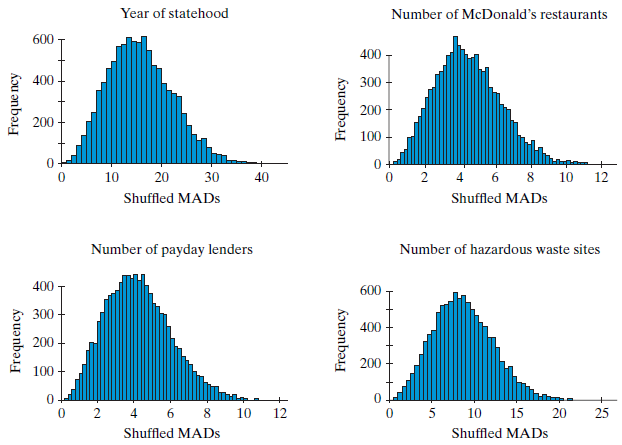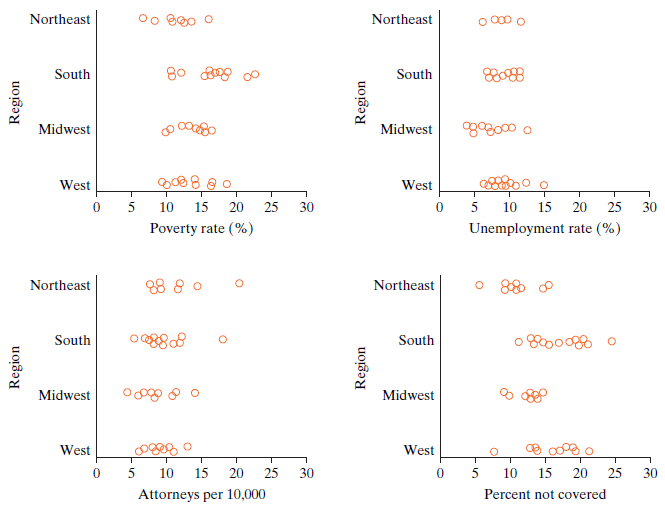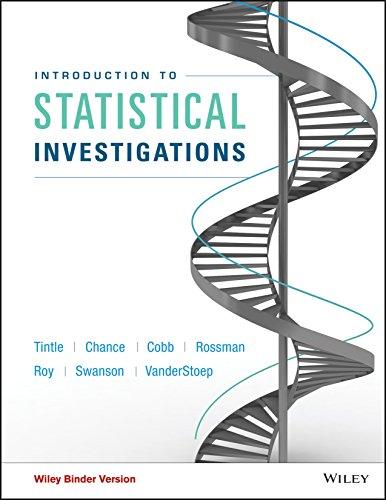The observational unit and explanatory variable are the same as in Exercise 9.CE.17. Consider another four response
Question:
a. The observed values of the MAD statistic are 56.7 (year), 2.7 (McDonald€™s), 5.6 (lenders), and 13.3 (waste sites). Use these values, together with the histograms, to assess the strength of evidence of an association. For which variables, if any, do you conclude that there is strong evidence of an association?
b. Use the information in the last question to rank order the four variables according to the size of the p-value, from smallest to largest.

Data from exercise 9.CE.17
The U.S. Census Bureau classifies the 50 U.S. states into four regions:
Northeast (9 states, New England and Middle Atlantic):
CT, ME, MA, NH, NJ, NY, PA, RI, VT
South (16 states, South Atlantic, East South Central, and West South Central):
AL, AR, DE, FL, GA, KY, LA, MD, MS, NC, OK, SC, TN, TX, VA, WV
Midwest (12 states, East North Central and West North Central):
IL, IN, IA, KS, MI, MN, MO, NE, ND, OH, SD, WI
West (12 states, Mountain and Pacifi c):
AK, AZ, CA, CO, HI, ID, MT, NV, MN, OR, UT, WA
(When the District of Columbia (D.C.) is included, it is part of the South.)


Step by Step Answer:

Introduction To Statistical Investigations
ISBN: 9781118172148
1st Edition
Authors: Beth L.Chance, George W.Cobb, Allan J.Rossman Nathan Tintle, Todd Swanson Soma Roy





